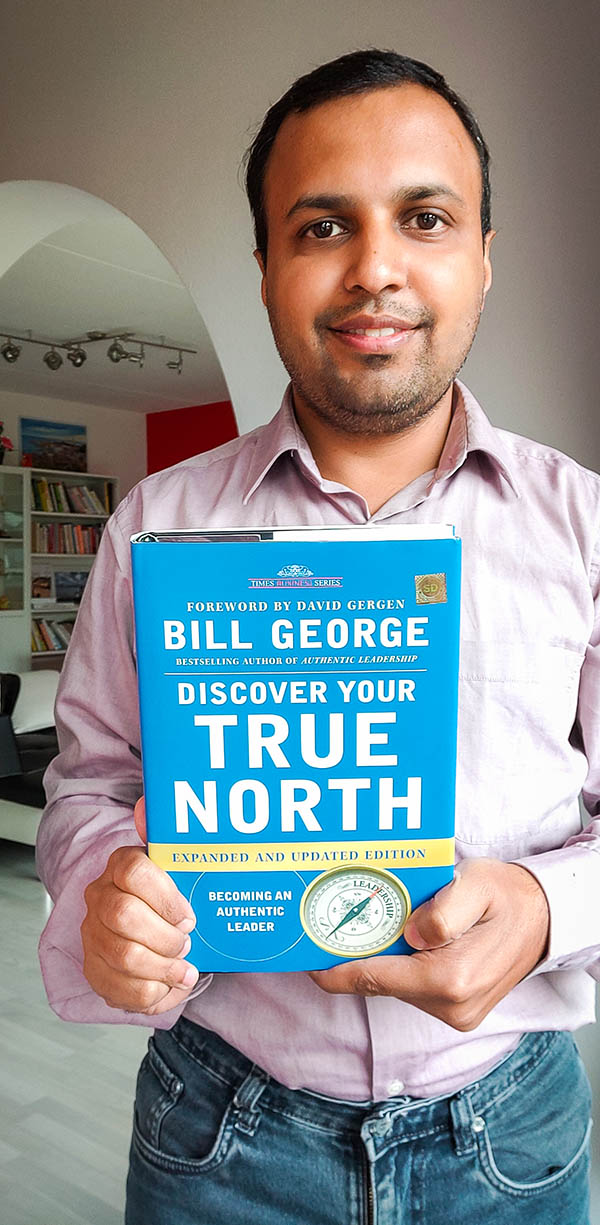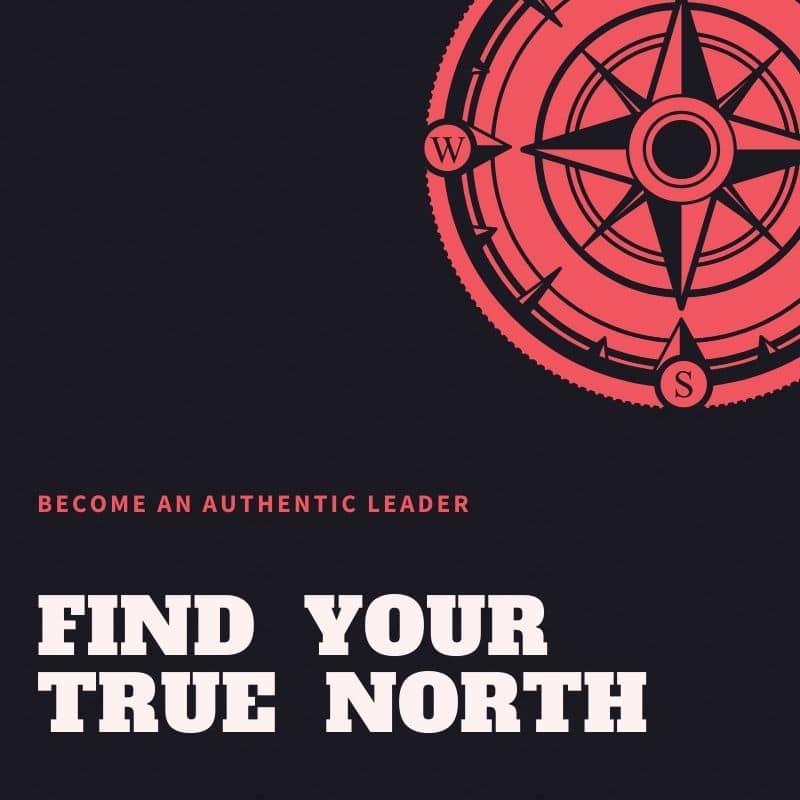Discover Your True North by Biill George (2007) is one of my all-time favorite leadership books. This book can help you discover one’s inner compass, develop authentic leadership skills, and uncover your values. It aids in becoming a better leader by keeping you on track and staying grounded.
Finding Your True North
The author of True North, Bill George interviewed 125 leaders, only to find that they are not very different from everyone else. He found that they know what the right issues are and give importance to them first. They focus on their True North – their inner compass that guides them to better hone their authentic leadership skills.
1. Your own life story can inspire you
Leaders know and understand that their own life stories have true value. They learn from these experiences. A true leader is genuine, true to his beliefs, and uses his own experiences to motivate others. The key events in one’s life can be a guiding star to find one’s True North.
Case 1: Howard Schultz, founder of Starbucks. Personal experience and memories of his father carried him along the path to authentic leadership.
Case 2: Reatha Clark King, former president of the General Mills Foundation. Her struggles as a poor black woman from Georgia in 1940, showed her the way to create opportunities for the poor and to overcome racial and gender discrimination.
2. Losing sight of your inner compass
Money, success, acclaim, and rewards can lure leaders astray and lose sight of their inner compass. Bill George suggests that there are five archetypal leaders who get derailed from their path –
- Imposters
- Rationalizers
- Glory seekers
- Loners
- Shooting stars
Case 1: Phillip Purcell, the former CEO of Morgan Stanley. A true imposter archetype used manipulation to climb up the corporate ladder, only to lose his credibility and many talented employees.
3. It’s not about how you lead, but about who you help succeed
Some leaders expect their followers to ‘follow their footsteps’. However, it’s not about gathering supporters to help you get ahead in life, but about motivating others to do their best to succeed and about realizing the true purpose of one’s leadership. Such realization often leads leaders to understand their greater calling through triggering experiences.
Case 1: Oprah Winfrey’s pivotal interview with Trudy Chase. The interview was a transformation that led her to understand her true purpose in life – to help others along their journey to success.
Case 2: Steve Rothschild, Vice President of General Mills. Dissatisfied with his leadership skills, he left his position to answer his true calling – helping underprivileged people become financially self-sufficient.
4. Self-awareness guides the way
Self-awareness keeps a true leader on track and helps in understanding shortcomings. You must know yourself, understand your strengths and weaknesses, and align them with your capabilities. A true leader can build strong teams with employees who have the skills that he lacks and learns from them.
Case1: Bruce Chizen, CEO of Adobe. He used his capabilities and skills to succeed in a role that he felt insecure about.
Case 2: Ned Barnholt, former CEO of Agilent. He built his team with financially competent team members knowing he lacked accounting skills.
Self-awareness has a downside too. It can be a blind spot for many leaders.
Case 3: David Pottruck, former CEO of Charles Schwab. Lack of self-awareness led to others perceiving him as self-serving despite being a hard-working CEO. He had to work hard to face his shortcomings and change perceptions.
5. Guiding principles and values to align with leadership
Values and principles, along with self-awareness guide leadership. If a leader has firm values and principles, he will establish authentic leadership skills.
It is always easier to stick to values and principles in easy times. The challenge is to stand by them even when careers are at stake. It is under extreme pressure that these values will be truly tested and could undergo metamorphosis.
Case 1: David Gergen, Presidential Advisor to Richard Nixon, Gerald Ford, Ronald Reagan, and Bill Clinton. Even at a time where his entire career was at stake, he did not stray and stood by his principles.
Case 2: Narayana Murthy, Founder of Infosys. He stuck to his values of honesty and ethics and saw success without bowing down to corruption.
6. Inspiration, purpose and, motivation
Self-aware leaders have a purpose and a goal that is driven by values and principles. Though focused, and fuelled by their capabilities, without the right motivation even the best leaders can only get so far. Authentic leaders go beyond and dig deep into their life experiences for the inspiration to find their true north.
Case 1: Bob Fischer, Chairman of The Gap. His concern for the well being of the environment was triggered during a fishing expedition on the Feather River that led to him joining the Natural Resources Defence Council (NRDC).

7. The importance of a support system
Whether it is a mentor, a support group, close relationships with supporting teams, or even close friends and family members, leaders understand that a solid support system is necessary. They understand that it is essential to nourish relationships. They know that their support system is not for making them feel good about themselves, but for challenges with a little bit of tough love.
Case 1: Dave Dillon of Fry’s Supermarket. He found a mentor in Chuck Fry, the founder of Fry’s Supermarket after Chuck Fry himself decided to walk Dave through a Fry’s Store and hand priceless titbits of experience.
Case 2: Bill George, the authors of the book, finds that his every Wednesday support group of 30 years is one of the most important sources of the most honest feedback.
8. Staying grounded and being always integrated
True leaders know that they need to integrate their personal and professional life and be the same person at both places. One can be grounded by remembering one’s humble beginnings even during the high points in life. True leaders find a base point where they can return to strike balance and reclaim the perspective of their true goals.
Case 1: Kris Johnson, former head of global business Medtronic. At the pinnacle of her career at Medtronic, she left and joined a mid-sized venture capitalist company because she was spending too much time away from her family. An essential sacrifice to strike balance.
Case 2: Akshatha Murthy, Daughter of Infosys CEO Narayana Murthy. She finds her base point in her hometown, Bangalore. She returns regularly to meet her old friends and family to keep grounded.
Conclusion
There are many facets to becoming a truly authentic leader. All the great leaders of the world have their inner compass in focus that is guided by their firm values and principles, a sure sense of self-awareness, intrinsic motivation, a strong support system, and a keen sense of grounding.
Tapping into these facets can make you a truly authentic leader!

Trackbacks/Pingbacks